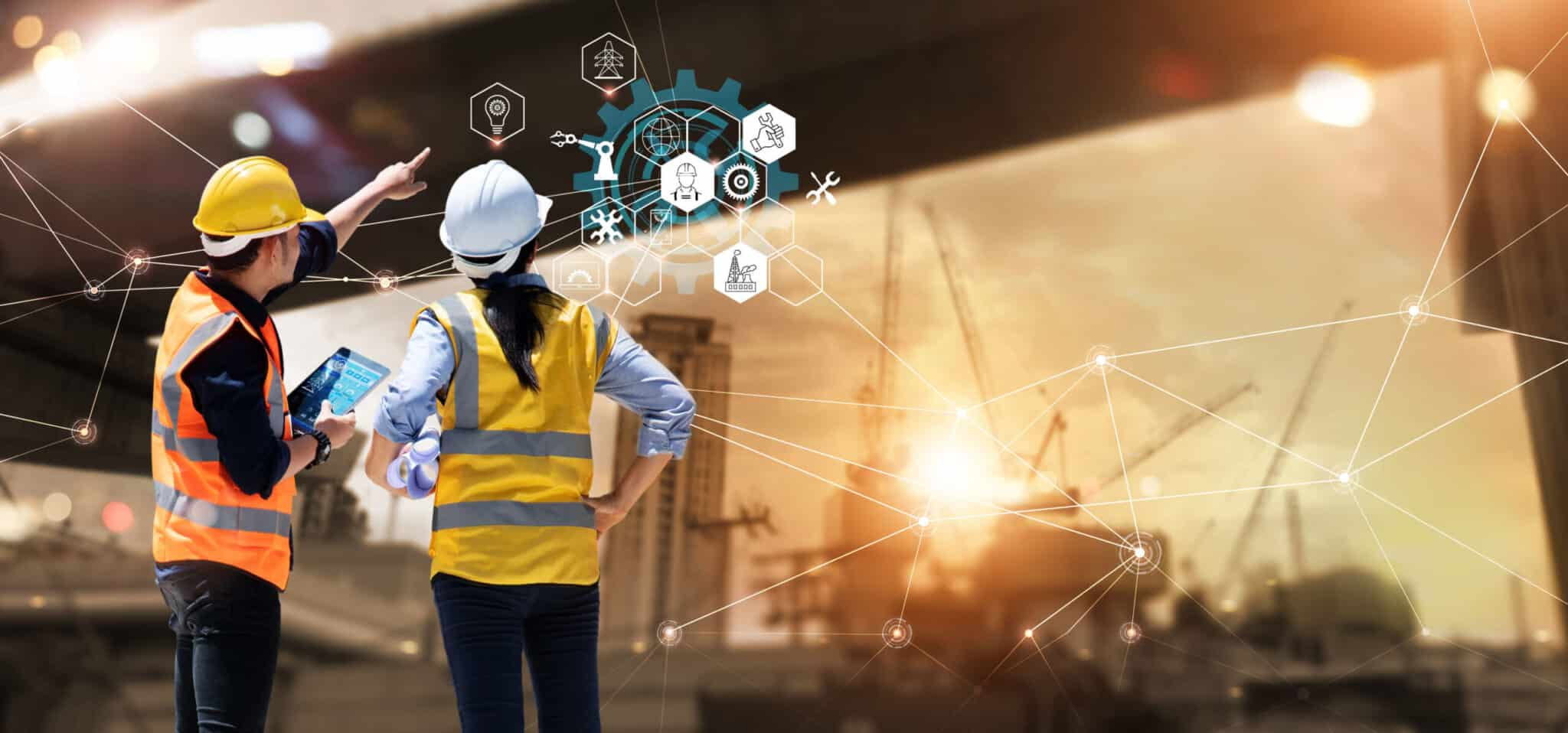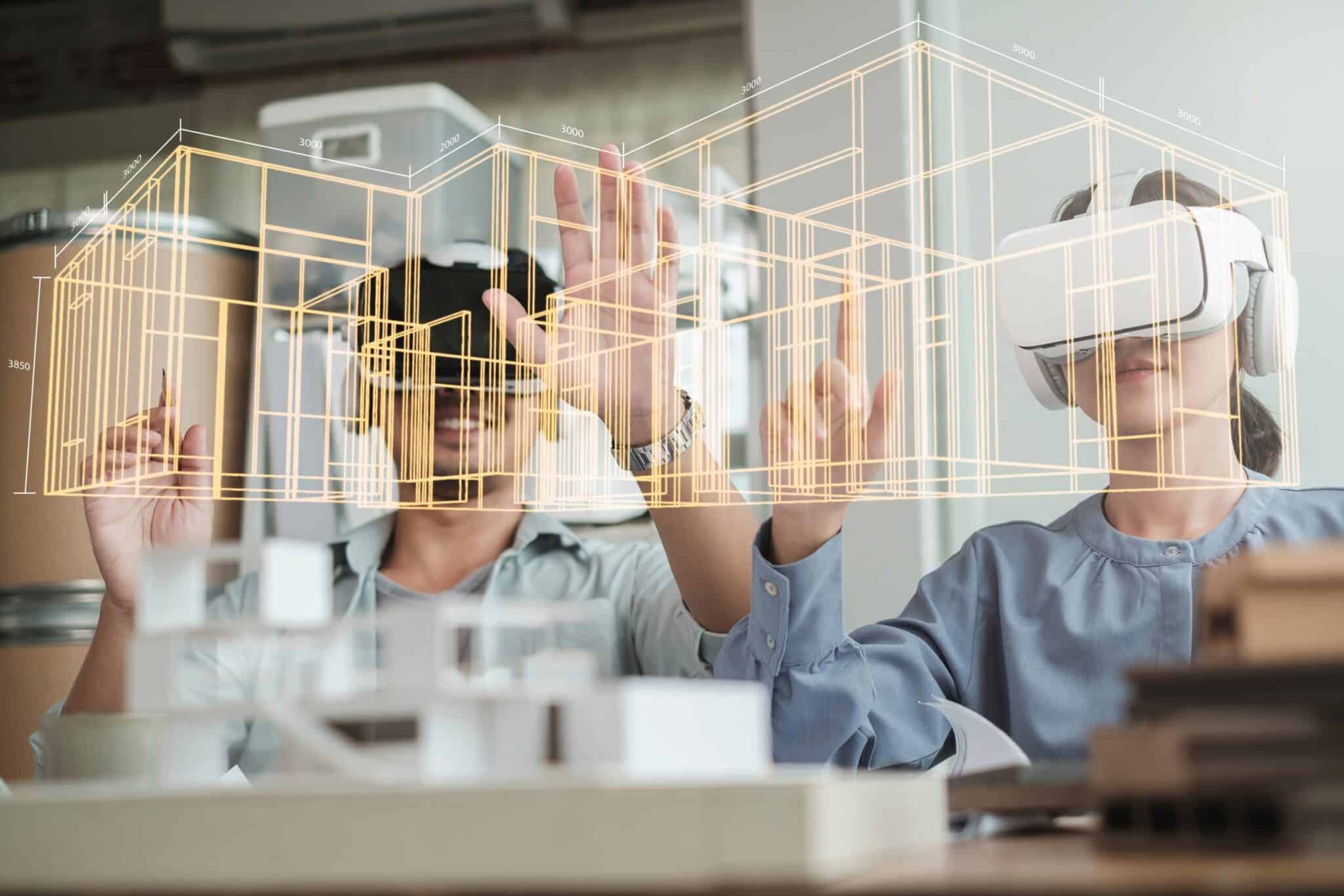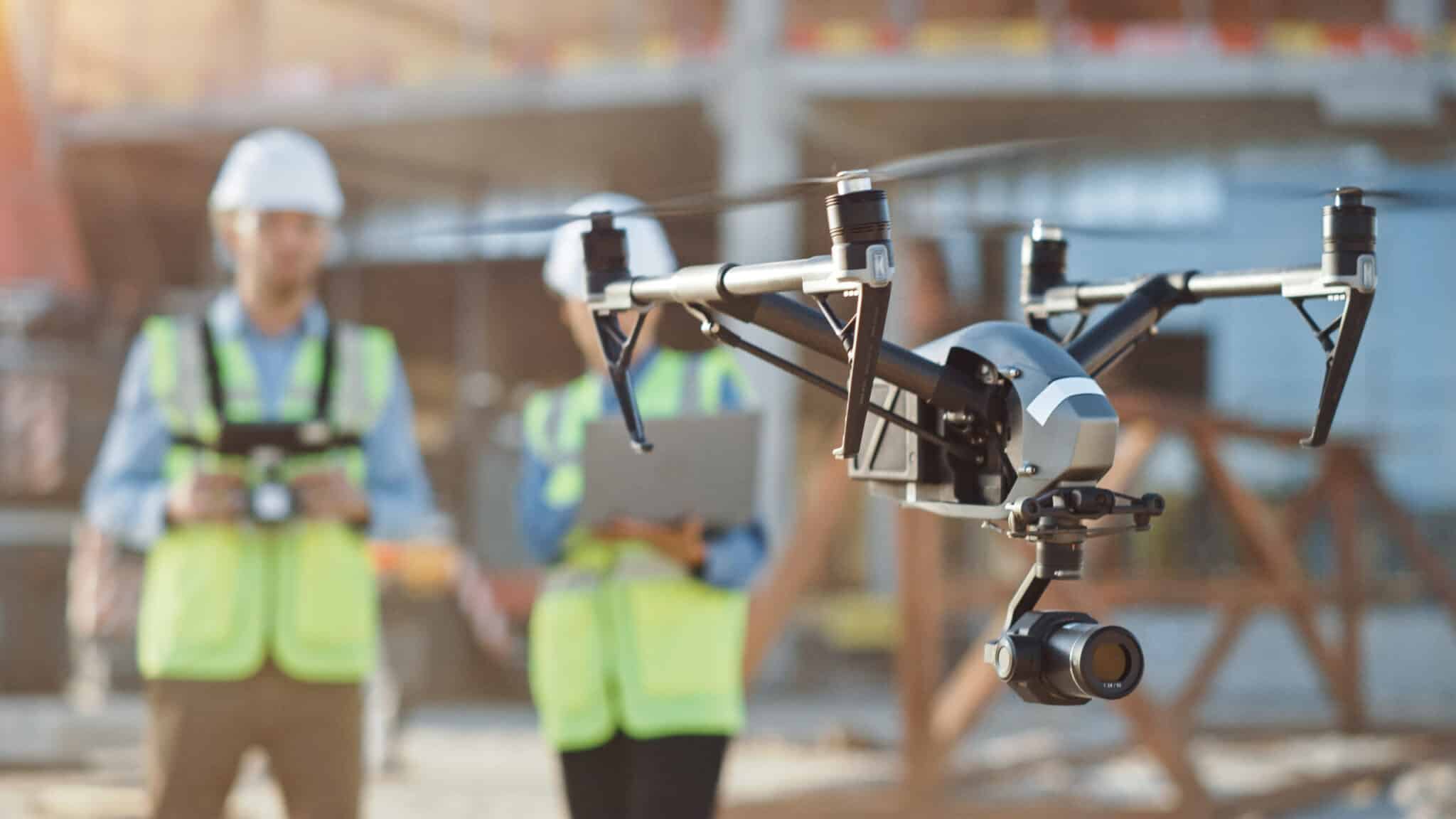

New Construction Technology Trends (2023)
source link: https://tweakyourbiz.com/posts/new-construction-technology
Go to the source link to view the article. You can view the picture content, updated content and better typesetting reading experience. If the link is broken, please click the button below to view the snapshot at that time.
New Construction Technology Trends (2023)

If you’re fascinated by the significant influx of construction technology trends that have cropped up post-Covid, you’re not the only one.
After years of stagnation, the construction industry is finally evolving — and it’s doing so rapidly. As such, it can take a lot of work to keep up with recent developments.
I’ve worked in the realms of technology and startups for over a decade and have been following developments in construction technology throughout that time. What can I say — this stuff fascinates me! Using that expertise, I’m here to help you better understand these trends.
Whether you own a construction company, are looking to start one, or, like me, are just curious about all things tech — this article should provide you with the essential information needed to get a handle on this quickly-evolving field.
Let’s get started!
Construction Technology Overview
The overarching goal of construction technology, or “ConTech,” is to streamline the construction process and make it more efficient. This means that most projects now use automated systems rather than relying solely on manual labor.
Automation helps reduce costs and can also increase project accuracy. It also makes the entire process much faster. Furthermore, it avoids putting people through the often challenging manual labor of construction work.
The increase in construction demands have created new realities in the industry, leading to significant technological changes and advancements. One major contributor is evolutions in BIM (Building Information Modelling), a government-authorized construction standard now allowing for new digital representations of potential spaces.
The BIM dimensions can range from 3D to 7D. Combine these new faculties with augmented and virtual reality, and we’re seeing brand new trends and processes in the construction world. If you want to bring your construction business to the next level, these are the things you should know about.
How is Technology Changing the Construction Industry?
To put it simply, technology is revolutionizing the construction industry. With more advanced digital tools and processes, construction can now be done faster, cheaper, and more accurately.
Large projects are becoming easier to manage due to groundbreaking technologies such as drones and robots that can be used to survey sites and complete heavy-duty tasks like excavating.
Furthermore, construction companies increasingly use cloud-based software to track projects and keep crew members informed. This leads to improved communication between team members, better organization, and enhanced collaboration across different sites.
Finally, 3D printing is becoming more prevalent in the industry, allowing for faster prototyping and design experimentation. This can go a long way toward increasing efficiency and reducing costs for the entire process.
These are only a few of the many technologies that have impacted construction — an industry poised to continue to evolve rapidly in the coming years. As such, keeping up with these trends is essential if you want your business to stay ahead of the competition.
What are the Latest Trends in Construction Technology?
So, now that we’ve established that construction is a rapidly-changing industry, what major trends contribute to this new landscape?
In the following sections, I’ll offer brief guides to the top new trends in construction technology, all of which create these primary benefits:
- Increased efficiency
- Increased safety
- Improved communication
- Improved project visualization
- More streamlined building processes
Let’s jump in!

DIM After BIM
Building Information Modeling (BIM) with construction software development will become Digital Information Management, changing the abbreviation and making the concept more well-known. The goal is to increase industry awareness, adoption, and application of BIM concepts. This can only be done using distinctive language while expressing the same ideas.
One of the main advantages of BIM is improved communication between project stakeholders and other actors. BIM is not dead; instead, we are redefining it, enhancing the informational component of the models, and showcasing it as a much more easily understood and accepted manner of managing information digitally. This will support the development of awareness and acceptance of BIM techniques throughout the construction sector to prepare for the transformation occurring in a field that is ready to start its digitization.
Robotics
Construction is one of the sectors that employ the most people. With robotics and automation, many tedious and repetitive tasks can be finished more rapidly. Moreover, human mistakes and fatigue-related losses are reduced by robotic construction workers. For example, collaborative robots precisely automate repetitive tasks like bricklaying, welding, and rebar tying.
Fleets of heavy equipment and tools for excavation, load lifting, demolition, and concrete work are automated by robotic systems. This quickens the pace of building while also enhancing worker safety. Robotic construction increases total project productivity, reduces the demand for labor, and provides security for risky or hazardous jobs.
As I mentioned earlier in this article, AI is starting to play a major role in construction technology.
AI can be used to improve processes like project scheduling and resource allocation, making it easier for companies to achieve their goals on time and within budget. AI also allows for better prediction of project outcomes and safer and more efficient monitoring of job sites.
AI is also very useful when it comes to dealing with data. Builders can also use AI to help automate data flow, allowing better collaboration between different departments and improved communication with stakeholders. Additionally, AI can analyze complex datasets and derive insight from them for decision-making. This will lead to more accurate forecasting and an improved understanding of project progress.
These are just the early beginnings of how artificial intelligence is being used to create more efficiency in the construction process — I’m sure that in years to come, we’ll need to update this article heavily! For more information, here’s a list of other top uses of artificial intelligence.
Augmented Reality
Along with artificial intelligence, augmented reality (AR) is becoming a popular tool in the construction industry.
AR allows workers to interact with their environment in real-time and view digital information that would otherwise be hard to see. For example, they can check measurements or instructions on an object without having to measure it physically. This speeds up the process, creates more efficiency (fewer tools to transport), and largely decreases the error margin with manual measurements.
AR can also generate virtual construction simulations, allowing workers to plan a project and estimate its cost before beginning construction work. Additionally, it is easier to identify potential flaws in the plans or materials used before they are implemented on the job site. This improves safety and accuracy on every job site — not to mention creating much more ease in communication.
Virtual Reality
Alongside AI and AR, virtual reality has a role in the construction industry.
VR allows workers to explore a project in a 3D environment, making it easier to visualize plans and understand how different project elements fit together. This will enable them to plan projects better, create more accurate estimates and identify issues before it’s too late to fix them.
Another great way VR can contribute to efficient construction environments is through virtual training simulations for construction workers. With VR, employees can practice different skills in a safe environment before trying them out on the job site. This improves safety and reduces costs associated with training new workers and keeping existing workers up-to-date with the latest technology. Plus, the training has more potential to be comprehensive and understandable, as it’s designed ahead of time instead of happening live.
Virtual reality, augmented reality, and artificial intelligence are already doing heavy lifting in the construction world — and they have a lot more to contribute. These trends encourage workers to create better plans and become more efficient with their work. They often lead to faster completion times and higher-quality results. This technology will only improve in years to come, creating a safer, more accurate, and cost-effective building process.

3D Laser Scanner
3D laser scanning is also becoming commonplace in the construction world. This technology enables workers to quickly and accurately capture data from a job site before, during, and after construction.
3D laser scanning helps builders create more accurate estimates for projects by providing detailed information about the objects that need to be built or reconstructed. It also allows them to document any changes throughout the project’s life quickly. This documentation can help with post-construction reviews and dispute resolution if necessary.
3D laser scanners can track worksite progress over time and identify areas where resources are being overused or underutilized. This helps improve accountability among workers while providing managers with the data they need to make informed decisions.
3D laser scanner technology has the potential to make a massive difference in the construction industry. Access to quick and accurate project information allows for more efficient task completion. This reduces costs associated with labor and materials and helps create a more pleasurable building process overall.
4D Simulations
4D simulations are another game-changing contribution to construction technology. These simulations are an advancement from 3D modeling, animation, and scheduling software that helps builders create an accurate timeline for project completion. These new simulations allow builders to visualize upcoming projects, track progress, and adjust as needed. It can make it much easier to ensure projects are completed or ahead of schedule.
4D simulations also enable workers to visualize how different elements of a project fit together, allowing them to identify potential problems before they occur quickly. This increases accuracy while reducing labor costs associated with manual measurements and inspections.
Like the benefits of the previous technological trends, 4D simulations can also improve safety. Any time workers can thoroughly plan out tasks before starting the building process, they’ll have a more straightforward path and more confidence in their job.
Building Information Models
Building Information Models (BIMs) are an absolute cornerstone of construction technology. BIMs accurately represent a building project before and during its development. This includes architectural aspects, structural components, mechanical systems, and electrical wiring information.
BIMs allow builders to visualize how all these elements fit together before they even break ground on a job site. This helps reduce costs associated with unexpected changes and delays in construction projects. It also provides workers with detailed instructions for each step of their task. Additionally, BIMs can be used to ensure compliance with local regulations and design standards, so there’s no need for costly rework due to noncompliance issues later on.
This isn’t exactly a brand-new trend, as BIMs are increasingly evolving into DIMs. Regardless, this is an integral piece of construction technology that deserves a place on this list.
3D printing
Whether on a small or large scale, 3D printing will already be used to develop and construct complicated buildings. In reality, Lennar, BIG, and one of the largest 3D printing construction firms, ICON, are working together to create a so-called “3D neighborhood” in Austin with 100 3D-printed homes.
Once construction is finished, the neighborhood will be the world’s largest community of 3D-printed homes.
We recognize that if you’re unfamiliar with 3D printing, it may be a complicated process. But remember that technology will enable you to construct homes with incredible accuracy. This will increase your productivity while decreasing labor costs and allowing you to complete tasks more quickly.
Digital Twining
Digital Twining is the term used to describe the combination of artificial intelligence (AI) and augmented reality (AR) in construction. Using Digital Twinning, a virtual model of the building can be generated with detailed information related to its structure, function, and performance. This data-driven approach allows builders to predict a construction project’s behavior before starting it.
Incorporating AI into this technology also ensures that builders can quickly identify potential problems. Keeping tabs on potential issues prevents worker inconvenience or injury, as there’s less likelihood of faulty design or inappropriate building materials. Additionally, Digital Twinning speeds up development time by eliminating manual surveys and inspections.
Moreover, digital twinning helps bridge the gap between physical construction sites and remote locations for workers monitoring projects from afar. Ultimately, this will help create safer and more efficient construction sites worldwide.
In summary, Digital Twinning is a powerful tool that helps builders navigate complex construction projects to ensure successful outcomes with fewer surprises. With its potential to save time and money while increasing worker safety, it’s easy to see why this technology is becoming an essential piece of the modern construction industry.
Blockchain Technology
Blockchain technology is another important and unique element of construction technology. It’s a distributed ledger system that can store, track and manage data related to the entire life cycle of a building project. This includes information about materials used for construction, safety protocols, payments made, and more.
The blockchain ensures that all this data is secure and tamper-proof. This means workers involved in a project have access to accurate information throughout its development, so they don’t waste time or resources on things that don’t need to be done. Additionally, it speeds up payment processes as there’s no need to wait for traditional financial institutions to process paperwork – everything is already recorded in the ledger system.
The secure nation of blockchain technology is highly desirable for construction moguls who aren’t ready to let their groundbreaking ideas be accessed by hackers or even the general public.
Drones
We really are living in the future — artificial intelligence, virtual reality, and now, drones!
Drones have become an integral part of construction technology. They can be used to survey and detect potential safety hazards quickly and accurately. They also help speed up project assessments by collecting data from inaccessible areas. Additionally, they provide a bird’s-eye view of job sites that typically require scaffolding or other expensive equipment.
The true power of drones comes with their ability to map new environments autonomously. This means they can identify materials required for specific tasks and even collect them autonomously. These autonomous drone fleets are expected to revolutionize project management by reducing labor costs while increasing productivity and accuracy in construction projects around the world.

Conclusion
The construction industry had a reputation for being stagnant, but since the Covid-19 pandemic, it’s shattered that image of itself. Now, it’s full of advancements changing the building process forever.
By utilizing the latest advancements in reality capture, artificial intelligence, augmented reality, virtual reality, 3D laser scanners, and more, builders can increase accuracy while reducing the timeframes and cost of projects. Together, these technologies are helping streamline construction processes while creating safer work environments for all involved. With the continued development of new tools and innovation within the sector, construction will become ever more efficient in years to come.
I hope this article gave you a solid idea of the new construction landscape. Here’s 3 easy ways to improve your construction business if you need more ideas. If there’s anything I missed, leave us a comment!
Thanks for reading, and until next time.
Recommend
About Joyk
Aggregate valuable and interesting links.
Joyk means Joy of geeK